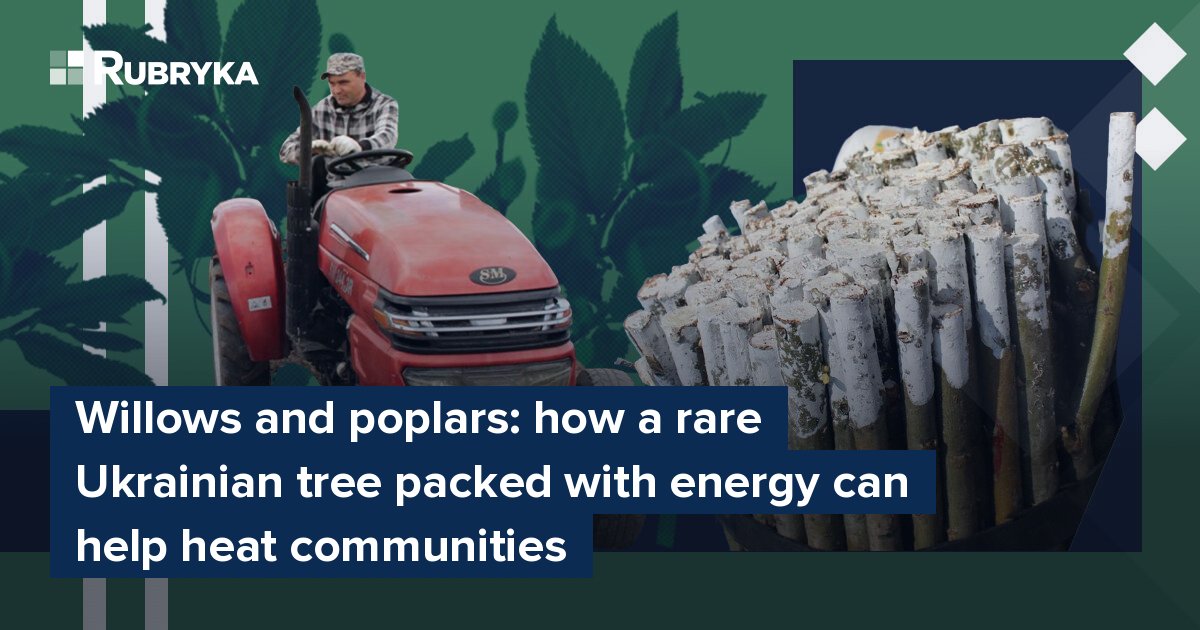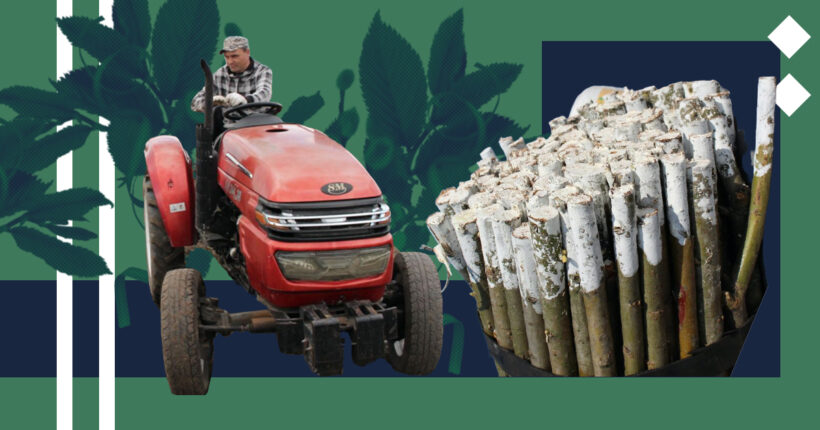
What is the problem?
From the first day of Russia's full-scale invasion of Ukraine, energy infrastructure became one of the main targets of aggression. Large-scale shelling and destruction of the energy infrastructure forced Ukrainians to look for alternatives for uninterrupted power supply and heating of buildings. At the same time, rising natural gas costs have strained state and local budgets, putting the issue of energy independence at the forefront of debate in Ukraine.
What is the solution?
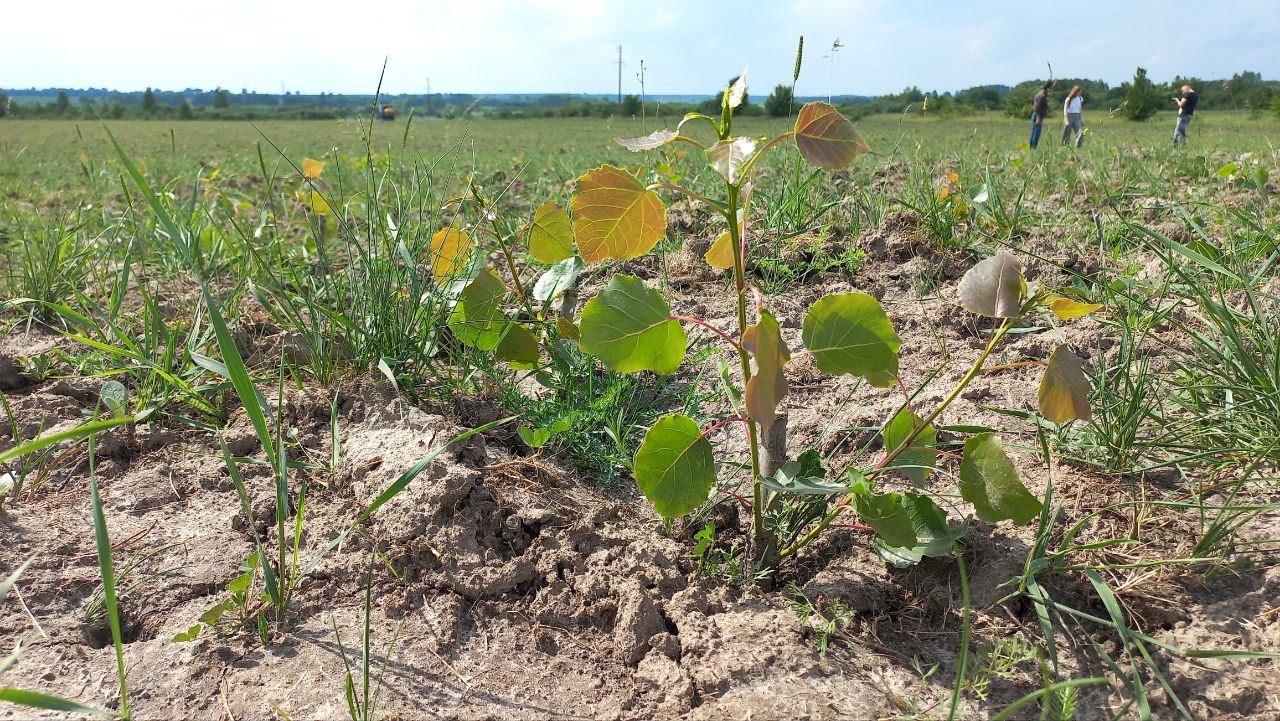
Poplars in the Khmelnytskyi region.
As it turns out, sustainable change is starting out locally. In three communities of the Khmelnytskyi region, locals decided to create plantations of energy trees for fuel chips to be used for winter heating – starting the transition away from fossil fuels toward a renewable biofuel. More than 100,000 energy willow and poplar saplings were planted on six hectares of communal land in the Khmelnytskyi region's Berezdivska, Krupetska, and Hannopilska communities for this purpose.
This initiative was made possible thanks to the project "Cultivation of energy cultures as a component of energy independence of communities," which is implemented by the NGO Khmelnytskyi Energy Cluster within the framework of local financial assistance of the U-LEAD with Europe Program, which is jointly financed by the European Union and its member states: Germany, Poland, Sweden, Denmark, Estonia, and Slovenia.
How does it work?
In search of ways to achieve energy independence
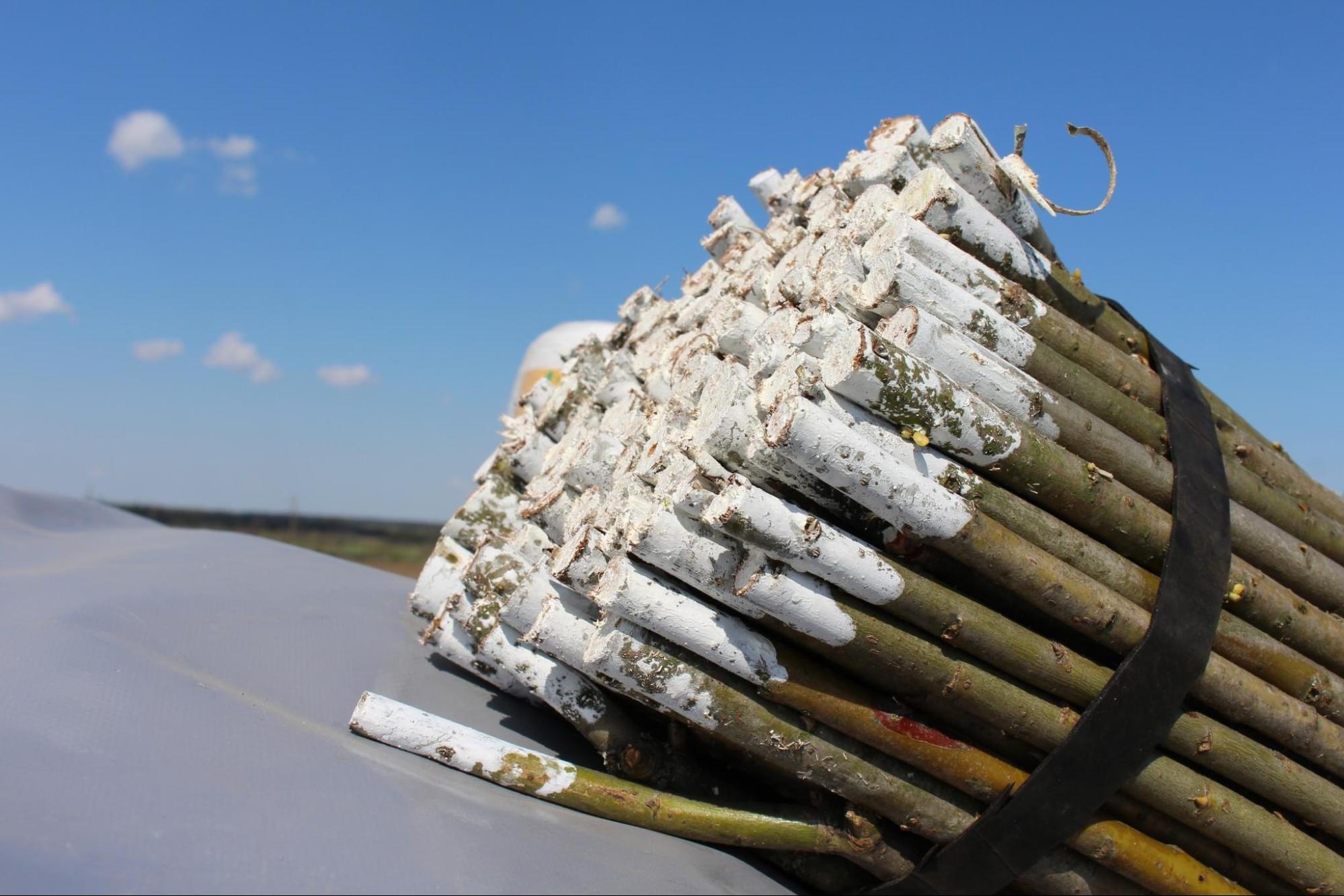
Seedlings of energy trees.
Khmelnytskyi Energy Cluster is an open platform that brings together the Khmelnytskyi region's non-governmental organizations, government, business, media, and science representatives. The organization has been operating since 2018 and promotes the ideas of the energy transition to renewable energy sources and energy-efficient solutions.
Aware of the challenges faced by communities during the war, in 2022, the organization conducted a study exploring the prospects of developing energy projects in the Khmelnytskyi region. Twenty-five communities participated in the Green Energy Course for Khmelnytskyi Region study, which provided 147 potential projects to reduce communities' energy dependence on fossil fuels.
Among the ideas considered was a project related to cultivating energy crops. In order to start at the beginning of 2023, the NGO began cooperation with three neighboring communities who were immediately interested — Berezdivska, Krupetska, and Hannopilska.
"The large-scale attacks on the energy infrastructure showed that our energy system should become as decentralized as possible and rely on local potential," explains Olena Rutkovska, project manager of the Khmelnytskyi Energy Cluster. The availability of raw materials for heating will make it possible to ensure the functioning of all infrastructure facilities in the most difficult autumn-winter period and not to depend on external challenges that affect the price and availability of fuel on the market.
Why choose energy crops?
Biofuels can cover a portion of the natural gas deficit for producing thermal and electrical energy, especially considering the fluctuations in gas prices. Different fuel types are used to produce thermal energy from biomass — pellets, and briquettes of various kinds of vegetable raw materials, baled straw, stalks or cobs of corn, firewood, and wood chips. Most often, all this is waste from agricultural or forestry production. However, there is another solution — planting energy crops.
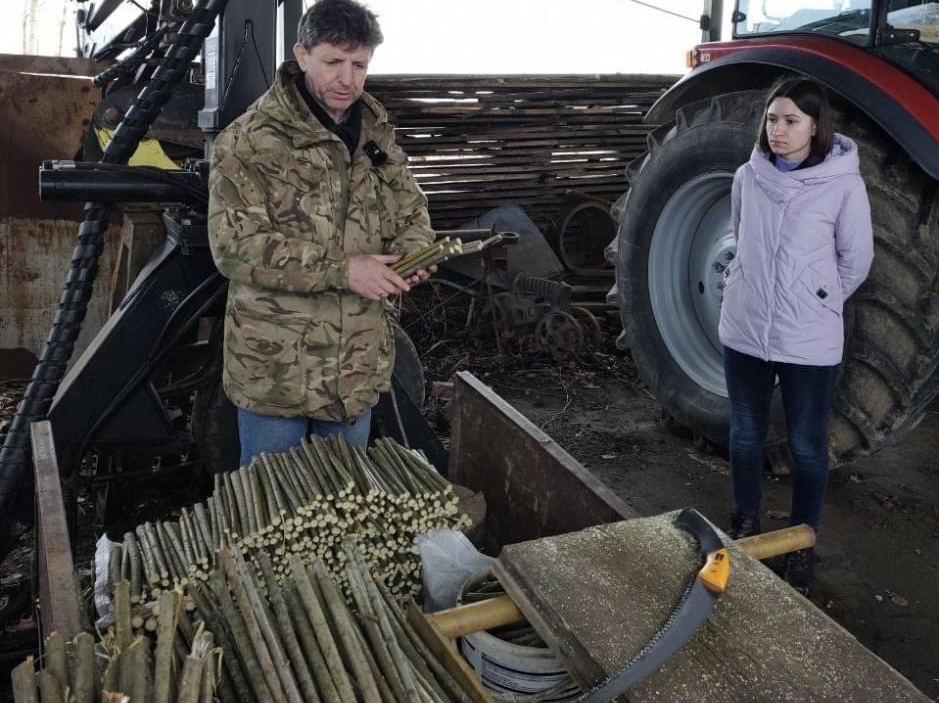
Harvesting willow and poplar cuttings.
Energy crops are plants specifically grown for use directly as fuel or for the production of biofuels. Their advantages are:
- Energy crops are valuable for their large yield and ease in cultivation.
- Energy crops significantly increase biomass in a relatively short time. Wood chips from forestry are not considered a major biofuel, given their long growth period, the unpredictability of supply volumes, and the difficulty of accessing plantations during the peak consumption season.
- Energy crops have a low ash content.
- Energy crops are carbon neutral — the same amount of CO₂ released during its burning is absorbed in the process of growing energy crops.
- Herbicides and other agrochemicals are not used during cultivation of energy crops.
- Energy crop plantations also prevent soil erosion and improve ecology.
Communities in the Khmelnytskyi region chose energy poplars and willows as raw materials for biofuels. The EU states have become an example for Ukrainians because they understood long ago that growing energy trees is much better than cutting down a forest for firewood. For instance, in Denmark, willow is grown on 500 hectares of agricultural land; in Sweden, willow plantations cover up to 20,000 hectares. Planting of energy trees is also gaining popularity in Ukraine: in recent years, plantations of energy willow have appeared in Ivano-Frankivsk, Volyn, Lviv, Ternopil, and Rivne regions.
These are new types of plantations for Khmelnytskyi, but according to the research of environmental experts, this area is very suitable for growing both energy willow and poplar. The first results after planting can be obtained after three years because these trees grow very quickly. An average of 40 tons of dry matter can be collected from one hectare of energy willow in one cycle, growing to three meters in three months. In addition, plantations of energy trees are usually planted on so-called marginal lands, which are unsuitable for growing crops.
Benefit for communities
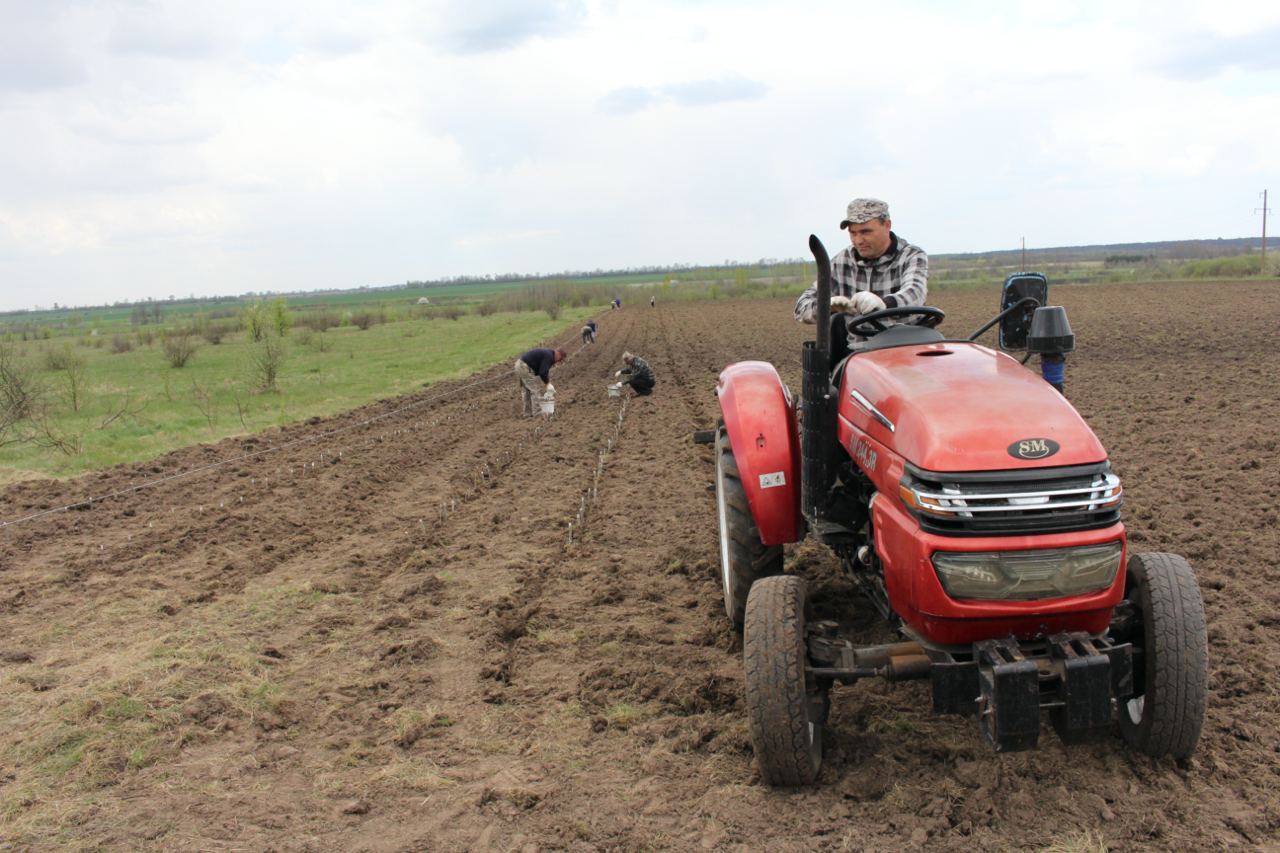
Planting of mother plantations of energy poplar and willow in Khmelnytskyi region.
Currently, as part of the project "Cultivation of energy crops as a component of energy independence of communities," the communities of the Khmelnytskyi region have already created their own nursery plantations. Six hectares of nursery stock were planted, two hectares in each community. The mother nurseries are growing up, and next spring, the communities will be able to create their first industrial plantations of energy crops.
The estimated useful life of willow and poplar plantations is 20 to 25 years from the moment of cultivation after which, farmers plan to rotate with new or cultivate traditional crops. During this period, harvesting an average of eight crops is possible.
How exactly to use the raw materials will be up to the communities to decide. The baseline scenario is shredding biomass energy crops into wood chips for heating communal facilities. For this, within the framework of the project, the Berezdivska, Krupetska, and Hannopilska communities received tractor eqipment for shredding biomass. They are already actively used by utility workers, preparing for the heating season. If the communities have the desire and opportunity, a briquette line can also be installed.
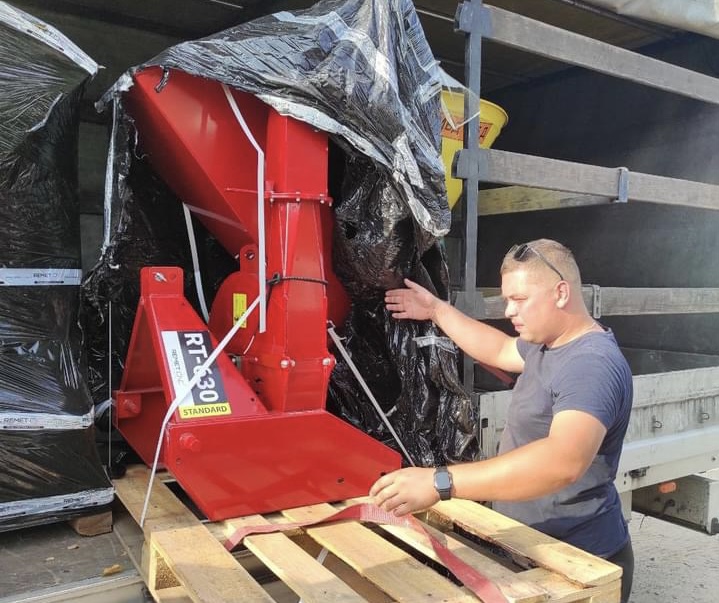
Within the framework of the project, the community received shredders for chopping biomass.
"It is financially beneficial for communities to use biomass for heating needs, given the fluctuations in the price of gas on the market, the exhaustion of this resource, as well as threats to the energy sector due to a full-scale war and an unpredictable post-war period," says Rutkovska, project manager of the Khmelnytskyi Energy Cluster NGO. "Basically, one hectare of energy willow or poplar plantation yields 150 to 180 cubic meters of raw material during a three-year harvest cycle, which can replace 13.5 thousand cubic meters of natural gas. According to our organization's calculations, the cost of fuel wood chips from the energy communal plantation is at least 30% lower than the market price."
Olena Rutkovska also lists other factors that affect the economic effect:
- The community does not pay for the rent of the land on which it grows energy crops.
- Personnel of utility companies are involved in the work, which does not require additional expenses for wages.
- There is no need to buy or rent equipment so the main expenses will be fuel, lubricants, and depreciation.
- The production of fuel wood chips is also located in the community, so there is no need for additional logistics costs for transportation.
- Compared to the purchase of wood chips on the market, its supply will be carried out by the utility company at cost without markup and taking into account income tax.
Did they really succeed?
"Being the first is always difficult, but it's worth it"
The Khmelnytskyi Energy Cluster team notes the leaders of the selected communities showed a high level of interest in the project, and actively contributed to its implementation. A detailed project plan helped solve most problems and lay the foundations for its successful implementation. Residents also participated in the planting of willow and poplar seedlings.
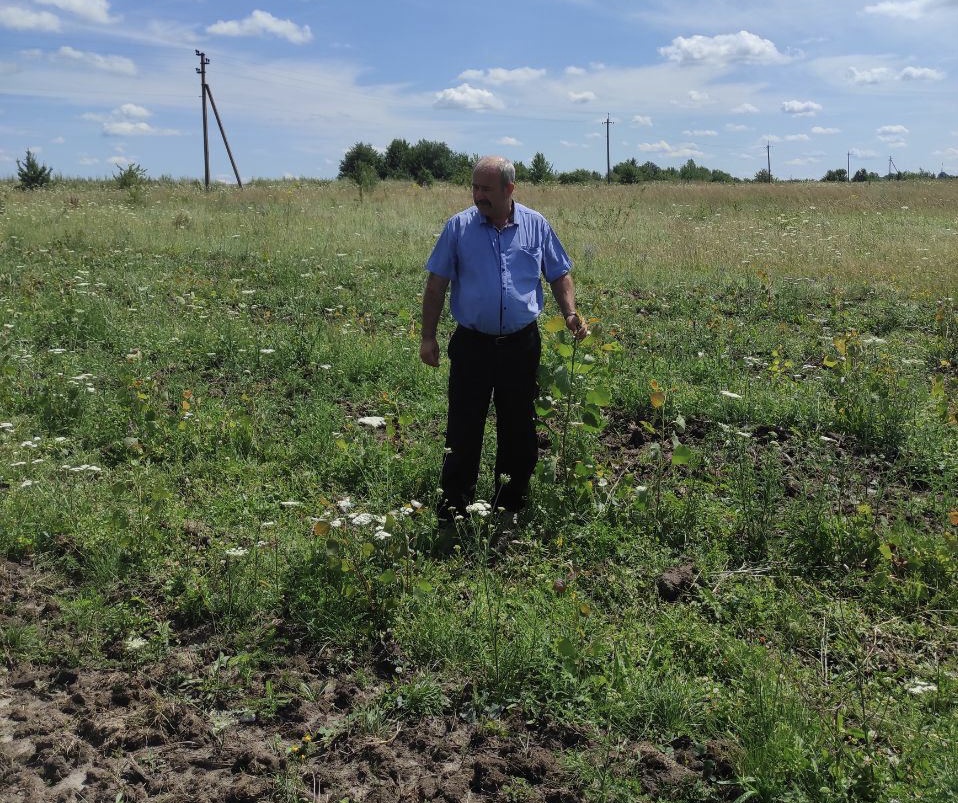
Viktor Vaskivskyi, the head of the Beredzivska community at the energy poplar plantation.
Viktor Vaskivskyi, head of the Beredzivska community, says that participation in the project is an opportunity to have economical, cheap fuel for nine educational institutions in the community, eight of which worked mainly on solid fuel. The community plans to use the planted two hectares of nursery plants for their own needs, but if everything goes well, they are ready to share seedlings with other communities.
"As a community, we were formed in 2016, and then we began to look ahead — we decided to move away from dependence on gas and purchased solid fuel boilers. And now we have our nurseries of energy trees. Although they were affected a little by the drought, in general, they are in a satisfactory condition, and everything has taken root quite well, so we will have planting material in the spring," says the head of the Beredzivska community. "We have plots of land that are not suitable for cultivation, and I think we will plant 50 to 60 hectares with willow to begin with. It is growing extremely fast."

How an energy willow grew over the summer.
Vaskivskyi says that local authorities unanimously supported participation in the project, and are looking to expand it by allocating a plot of land, and buying equipment to cultivate and process future plantations. The community understands that these are all critical points in its energy independence.
"Today, it is necessary to be more economical, to look at one's resources. Look for opportunities, participate in projects, and use unsuitable land plots. Being the first is always difficult, but it is worth it. We were not afraid to be the first in decentralization. Everyone was waiting, but we did it, and thanks to this, we received a lot of money from the state. We were not afraid either this year. We took up this business, and I think it will be successful. I'll repeat it: the main thing is not to be afraid. You just have to start, work, and everything will work out," adds Vaskivskyi.
Even more useful solutions!
The Khmelnytskyi Energy Cluster notes that the organization will continue to help the communities participating in the project to develop energy independence. For each community, the NGO has developed a program to support growing energy crops to improve self-sufficiency in biomass for heating needs. Among the potential projects is constructing a bio-thermal power plant on wood chips or installing a pelletizing/briquette line.
"We have an ambitious goal — to bring the energy independence of the Khmelnytskyi region closer, including through the transition to RES. Such practical projects are the first small steps on the way to its achievement," says Rutkovska, project manager of the Khmelnytskyi Energy Cluster NGO.
Communities in other regions of Ukraine can benefit from the experience of Khmelnytskyi. For this purpose, the NGO has developed methodical materials available for download to help communities independently implement similar initiatives.
This article was published as part of the Voice of Communities campaign, which is part of the Program for Ukraine on local empowerment, accountability, and development U-LEAD with Europe, jointly funded by the EU and its member states Germany, Poland, Sweden, Denmark, Estonia, and Slovenia to support Ukraine on its way to strengthening local self-government. U-LEAD promotes transparent, accountable, and multi-level governance in Ukraine that responds to the needs of citizens and empowers communities.
Newsletter
Digest of the most interesting news: just about the main thing



